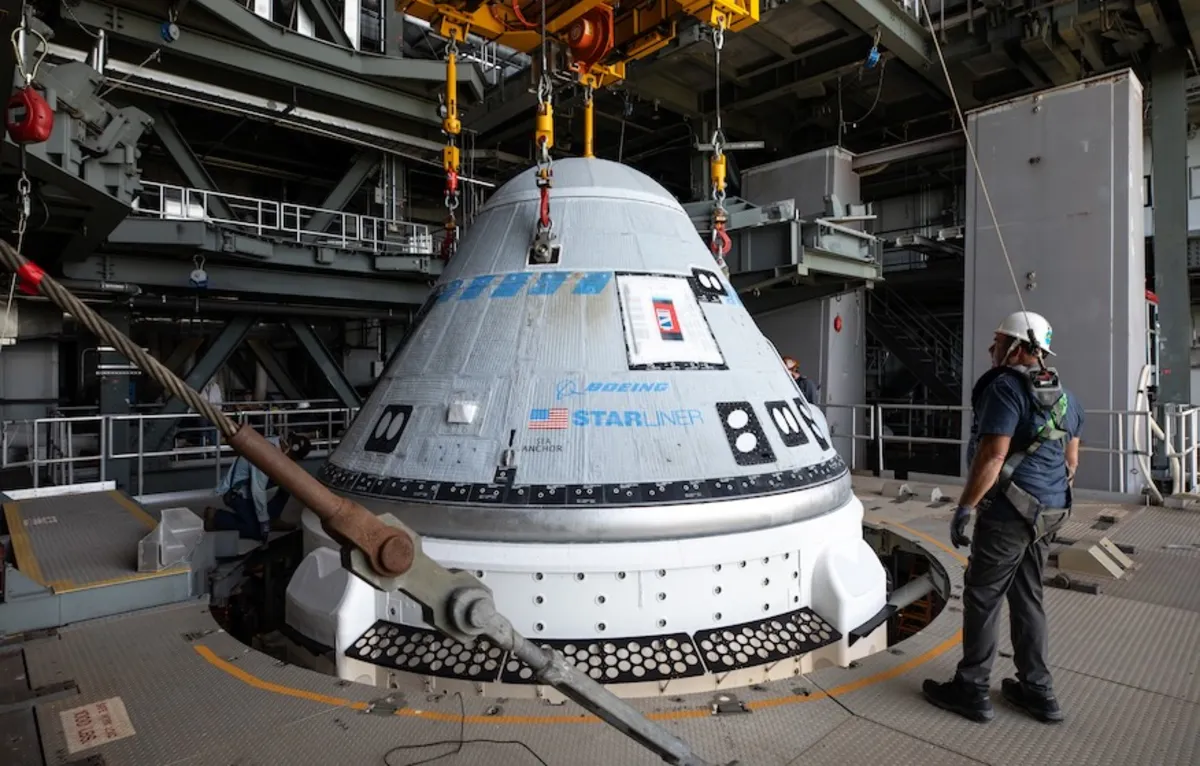
On this day last year, Boeing’s CST-100 Starliner spacecraft made headlines by successfully docking with the International Space Station (ISS). This monumental event marked the beginning of its long-anticipated Crew Flight Test involving NASA astronauts Sunita “Suni” Williams and Barry “Butch” Wilmore. However, one year later, the future of the Starliner program is shrouded in uncertainty as NASA announced a significant delay for the spacecraft's next flight, now pushed from late 2025 to early 2026 at the earliest.
Nasa specified that the timing for the upcoming launch is contingent upon “system certification and resolution of Starliner’s technical issues.” In a previous statement issued on March 27, NASA reiterated that they are still assessing whether the next Starliner flight will include astronauts onboard. In a recent interview with Reuters, Williams suggested that it would be “the logical thing to do” for the next mission to be uncrewed, expressing her hope that both Boeing and NASA would align on this decision.
The Starliner spacecraft had an ambitious start with its inaugural mission to the ISS in June 2024. Unfortunately, it returned to Earth without its crew due to persistent issues related to helium leaks and propulsion system anomalies. The spacecraft made a safe landing at the White Sands Space Harbor in New Mexico on September 7, 2024. Following this uncrewed return, Wilmore and Williams participated in the Expedition 72 crew on the ISS as part of the SpaceX Crew-9 mission, which concluded its journey back to Earth in March 2025.
After the Starliner’s return in September 2024, NASA remained tight-lipped about the vehicle's next steps until early March during the SpaceX Crew-10 briefings. Steve Stich, the manager of the Commercial Crew Program (CCP), indicated on March 7 that both NASA and Boeing are still addressing the necessary corrective actions for the vehicle before finalizing plans for its next flight. “We’ll continue to work for certification toward the end of this year,” Stich noted, emphasizing that the Starliner will remain crew-capable.
As part of their efforts, NASA and Boeing are committed to conducting thorough evaluations and integrated testing of the Starliner's thrusters at the White Sands Test Facility in New Mexico. This includes validating thermal models and exploring potential upgrades to the propulsion system and spacecraft thermal protection systems for future missions. The term “doghouse” refers to the compartments on the Starliner’s service module where the Reaction Control System (RCS) thrusters are housed. During the initial attempt to dock with the ISS, five of these thrusters failed, raising concerns about the spacecraft's operational reliability.
As NASA continues to deliberate whether the next flight of the Starliner will have a crew onboard, questions loom over the astronaut lineup for the first crewed mission, referred to as Starliner-1. Originally, it was expected that NASA astronauts Scott Tingle and Edward Michael “Mike” Fincke, alongside Canadian Space Agency astronaut Joshua Kutryk, would comprise the mission crew. However, following recent announcements, both NASA and the Canadian Space Agency have refrained from confirming these assignments.
The astronaut crew for Starliner-1 has not remained static. Initially, in 2018, NASA unveiled the crews designated for both Boeing's Starliner and SpaceX's Crew Dragon. Over the years, assignments have shifted due to various factors, including medical reasons and mission modifications. Most recently, on March 27, NASA reallocated some astronauts to different missions, further complicating the crew lineup for Starliner-1.
Despite the uncertainties surrounding the future of the Starliner program, both Wilmore and Williams remain optimistic about its success. Wilmore expressed confidence in Boeing's commitment to rectifying the issues encountered during previous missions. He stated, “We’re going to rectify all of these issues that we encountered. We’re gonna fix ‘em. We’re gonna make it work.”
NASA continues to evaluate future crew assignments based on qualifications, experience, and mission requirements. As the agency works towards the next phase of the Starliner program, updates on crew assignments and mission timelines will be shared as they become available, keeping the aerospace community and the public informed.